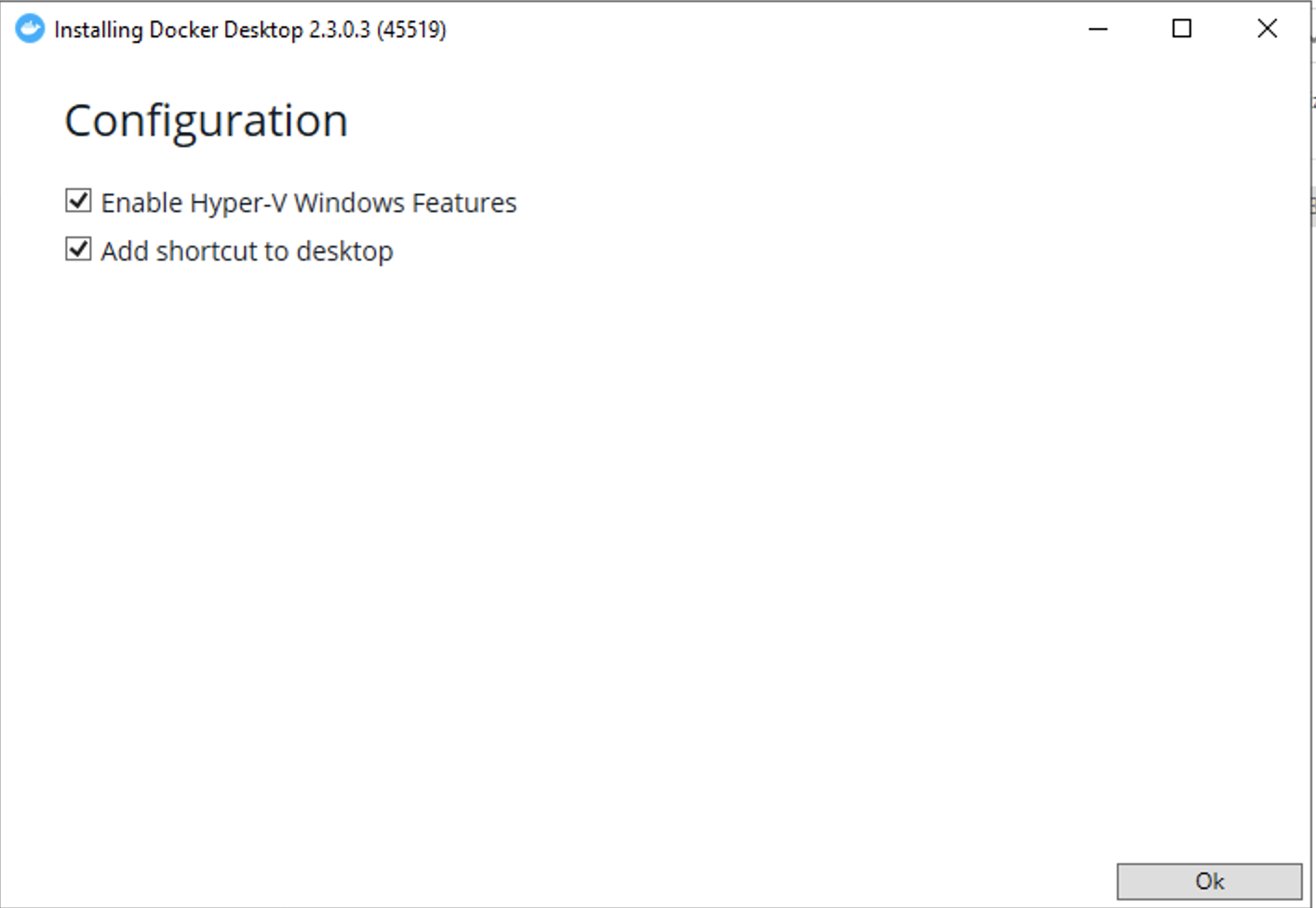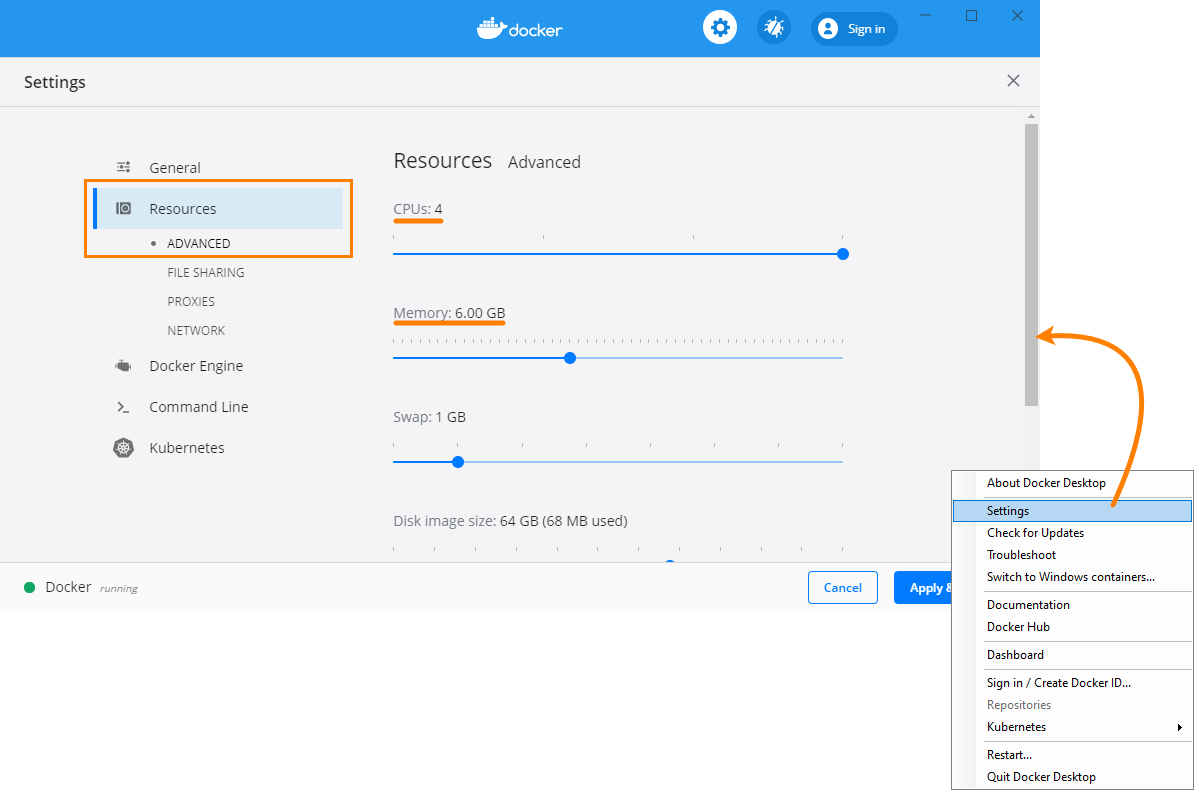Installation of Zephyr Enterprise Trial via Docker
This page will guide you through the steps to install Zephyr Enterprise via Docker.
The installation steps are for the trial only. If you're ready to set up a production instance or have special installation requirements, refer to our product installation page.
Prerequisites
Please ensure your system meets the following minimum requirements:
OS | Microsoft Windows 10 Professional or Enterprise, Linux, or Mac. |
|---|---|
CPU | Minimum 4 CPUs. |
RAM | Minimum: 8 GB. Preferred: 12 GB. |
Disk Space | At least 5 GB of free disk space. |
Networking | The following ports must be available:
|
Warning
Zephyr Enterprise Trial should be installed on a computer that is always up and running. For example, you shouldn’t install it on a laptop.
1. Install Docker
On Windows
1. Install Docker for Windows as an administrator:
 |
2. Enable Hyper-V.
3. Start the Docker application.
4. Open the Docker Settings, select Resources > Advanced, and make sure that:
The number of CPUs is set to at least 4.
The amount of the available memory is set to at least 6 GB:
 |
5. Verify Docker installation by running the following command:
docker -v
6. Install Zephyr.
On Mac
1. Install Docker for Mac.
2. Start the Docker application.
3. Open the Docker Settings, select Resources > Advanced, and make sure that:
The number of CPUs is set to at least 4.
The amount of the available memory is set to at least 6 GB:
 |
4. Verify Docker is properly installed by running the command below:
docker -v
5. Install Zephyr.
On Linux
1. Install Docker for your Linux platform.
2. Install Docker Compose.
3. Start the Docker application.
4. Open the Docker Settings, select Resources > Advanced, and make sure that:
The number of CPUs is set to at least 4.
The amount of the available memory is set to at least 6 GB:
 |
5. Run the command below to increase limits on mmap counts for Elasticsearch:
sysctl -w vm.max_map_count=262144
6. Verify Docker is properly installed by running the commands below:
docker -v
docker-compose-v
7. Install Zephyr.
2. Install Zephyr Enterprise
1. Download the Zephyr Enterprise Docker .zip file.
2. Unzip it to any folder on your hard drive.
3. Open the command-line window and navigate to the root directory where the docker-compose.yaml file is located.
4. Execute the following command:
docker-compose up -d
Tip
On Linux, use sudo.
5. Wait until dependencies are downloaded. This may take a few minutes. Once done, execute the following command to watch the log output:
docker logs zephyr -f
Tip
On Linux, use sudo.
6. Wait until the installation completes, this may take several minutes. Please watch the logs for the following message that indicates successful installation:
****************************
Zephyr Started
****************************
7. Once the message above is displayed, Zephyr is ready to start. To load it on your computer, open the localhost/flex/html5/login page in your browser:
8. The Zephyr trial comes with the following default user accounts preconfigured with typical roles and access permissions for your convenience:
Account | Login | Password |
|---|---|---|
Test Manager | test.manager | test.manager |
Test Lead | test.lead | test.lead |
Tester | tester.one | tester.one |
Please share these credentials with other team members who want to participate in the trial. You can update the credentials and permissions at any time by following the instructions on the User Setuppage.
Useful commands
Restart Zephyr
Use the following command:
docker restart zephyr
Replace the license file
The Docker installation comes with a default 3-seat license.
To get more seats, please send an email to [email protected] or send a request to your SmartBear representative.
Once you receive the license, unzip it to some local folder, and then use the command below to replace it in your Zephyr installation:
docker cp license.lic zephyr:/usr/local/zephyr/license/
Back up data
If needed, you can back up your Zephyr trial data. To do that, navigate to the desired local directory and run the following commands:
docker exec -it mysql mysql -p -uroot itcc > itcc.sql
docker cp zephyr:/usr/local/zephyr/zephyrdata
Tip
The default password of the MySQL root user is root.
These commands will back up both the database data and the local Zephyr files (including all the attachments).
Uninstall Zephyr
The steps below will completely remove Zephyr from your system.
Warning
Performing these steps will delete all the data from your Zephyr trial as well as other Docker installations you may have on your machine.
To remove Zephyr, run the following commands one after another:
docker rm -f mysql zephyr elasticsearch
docker volume prune -f
docker system prune -f
docker rmi -f $(docker images -qa)
To make sure the removal was successful, verify that all of the below are blank:
docker ps -a
docker images
docker volume ls